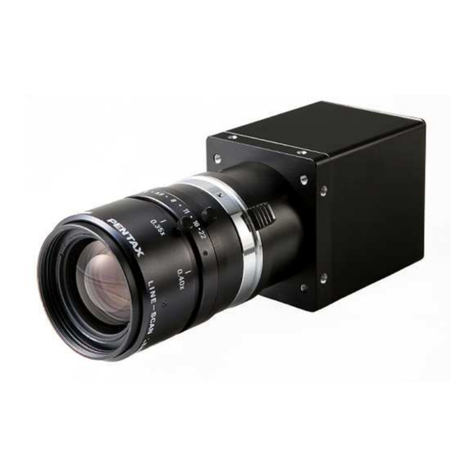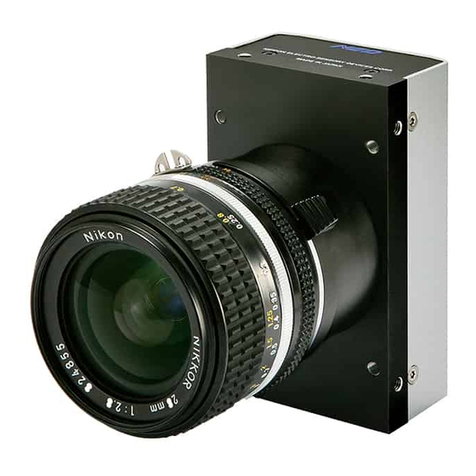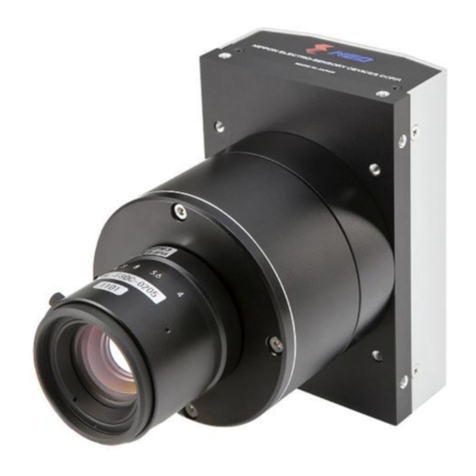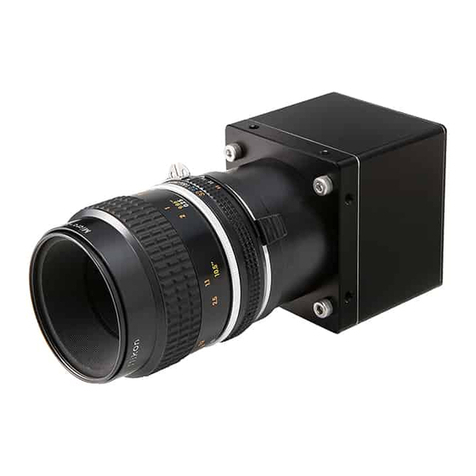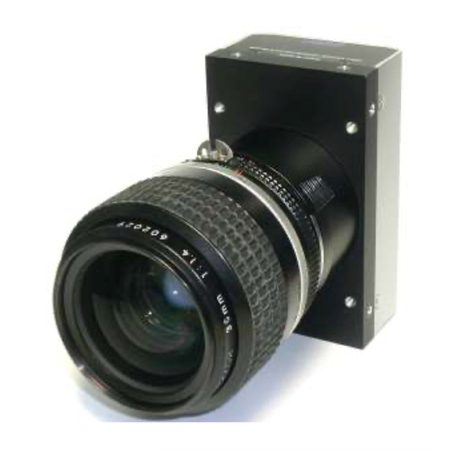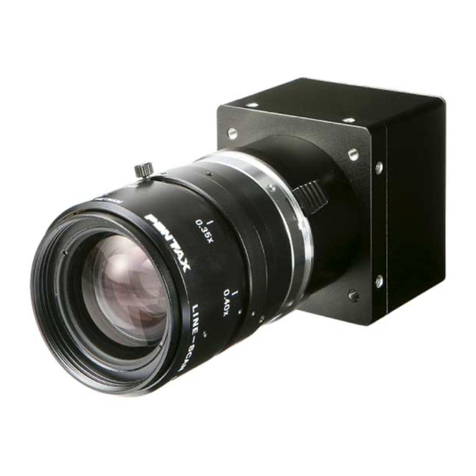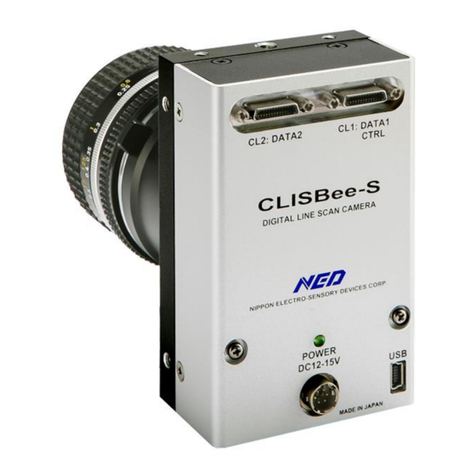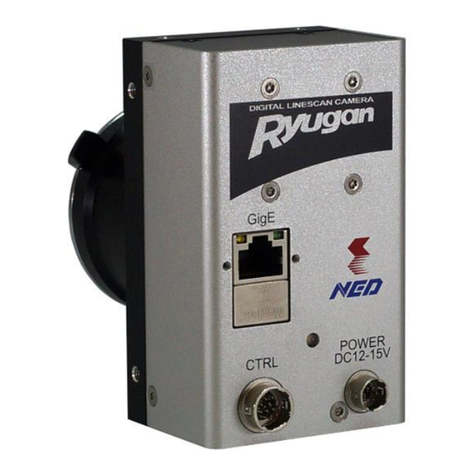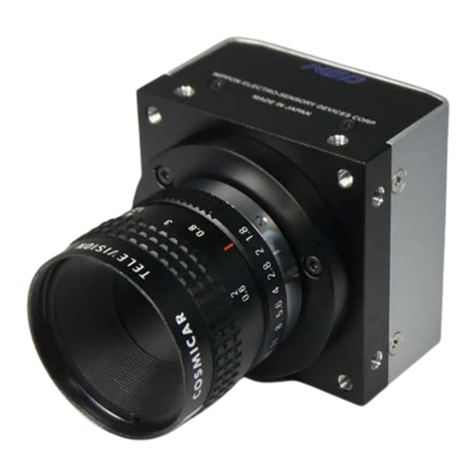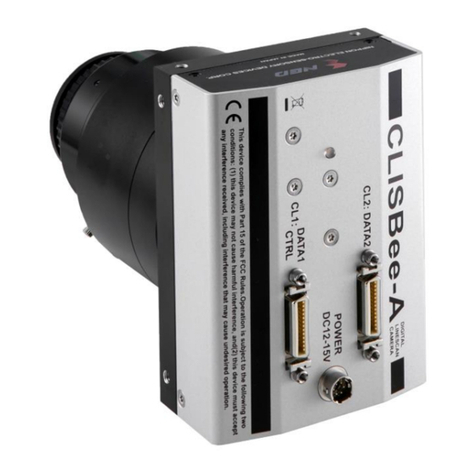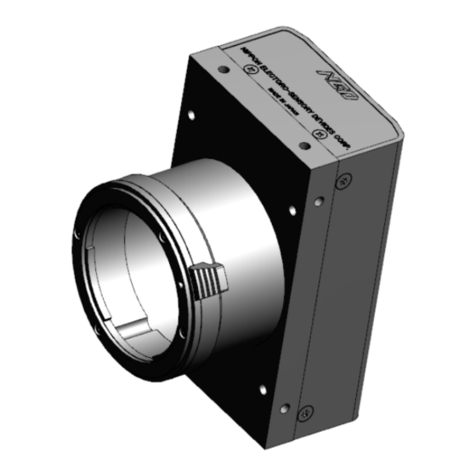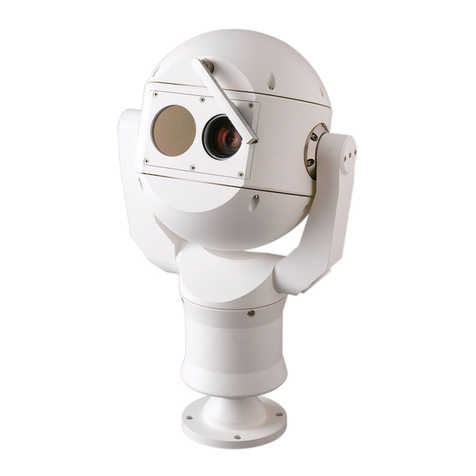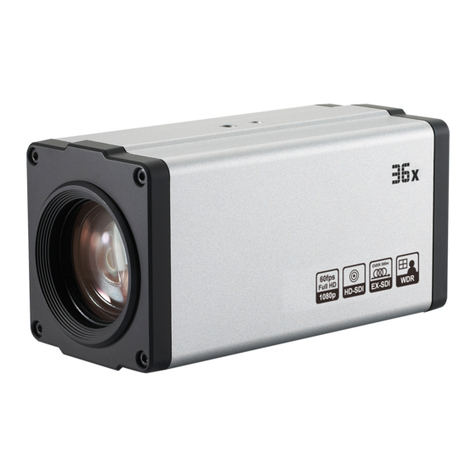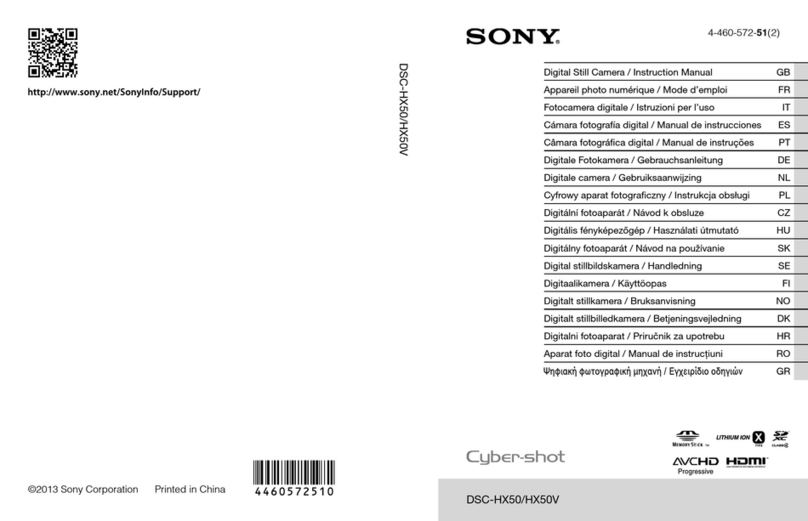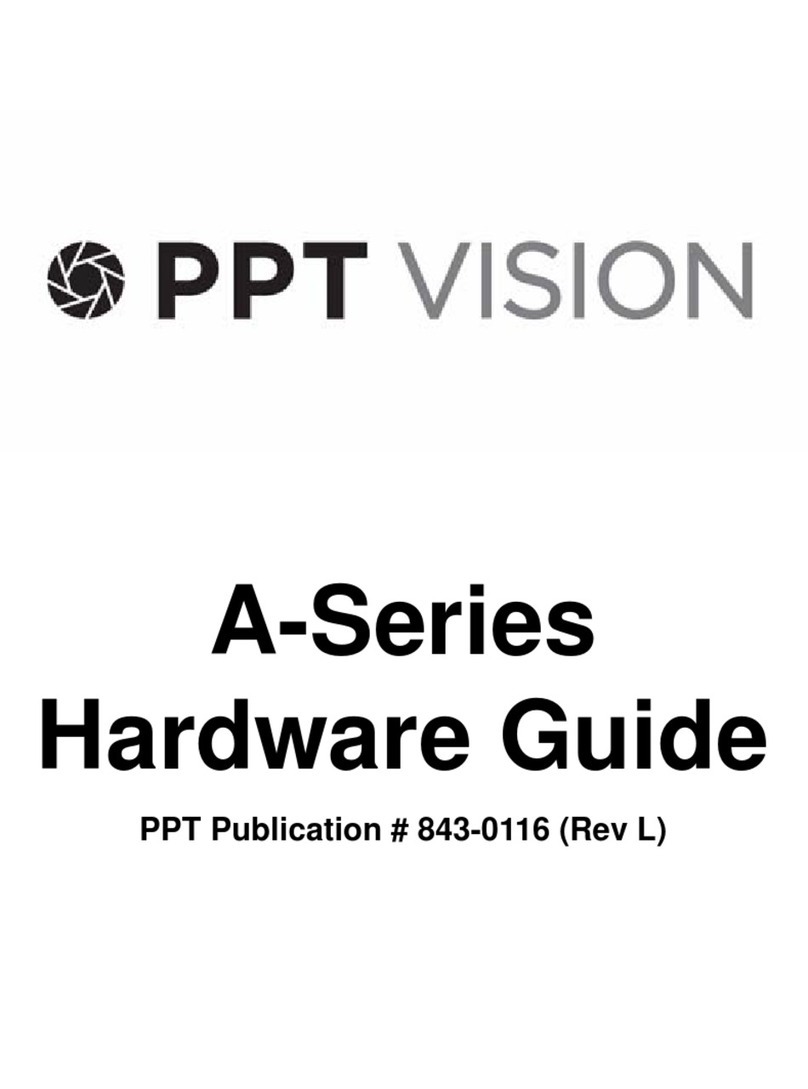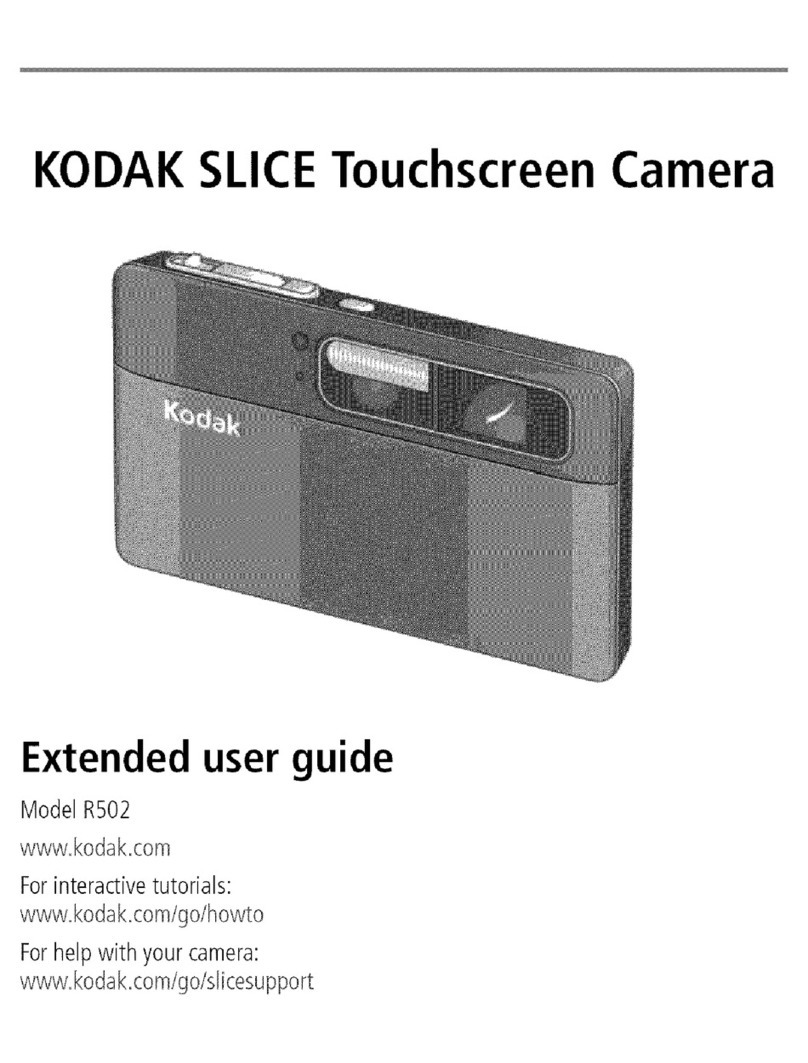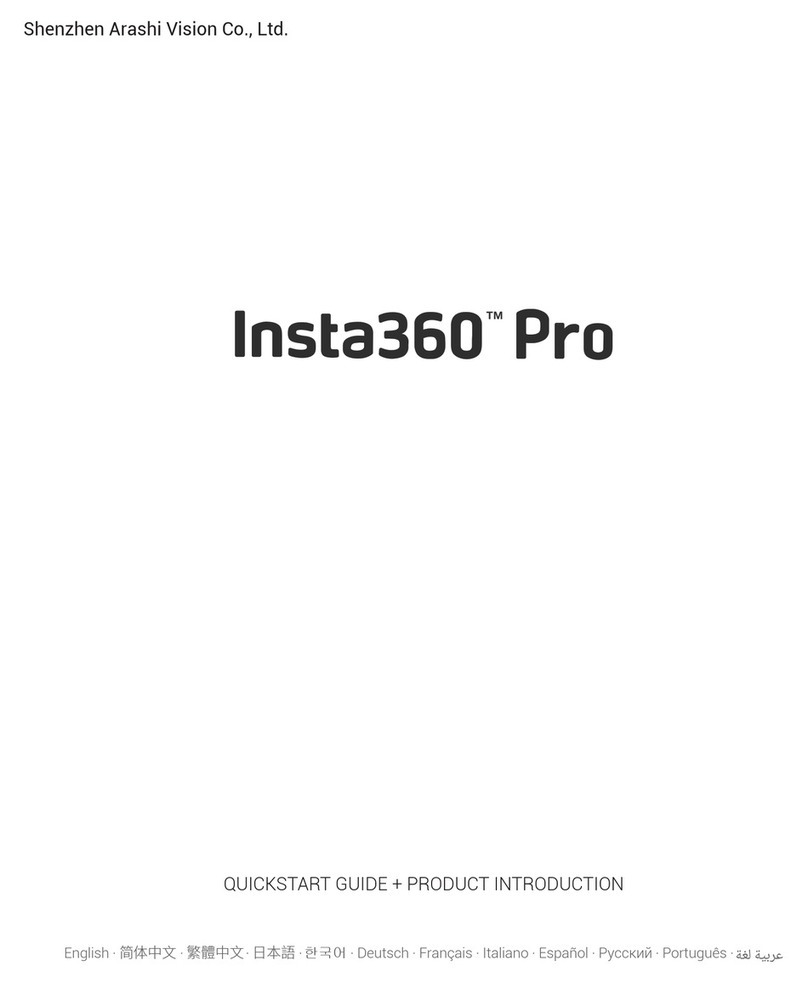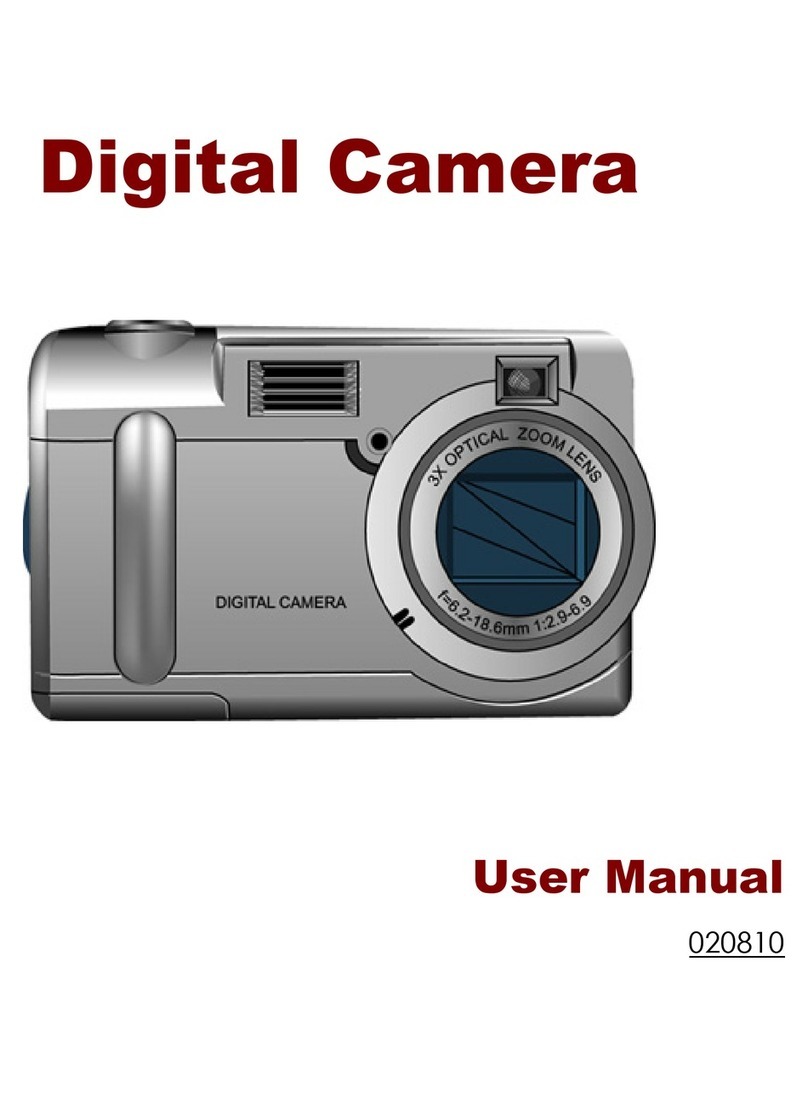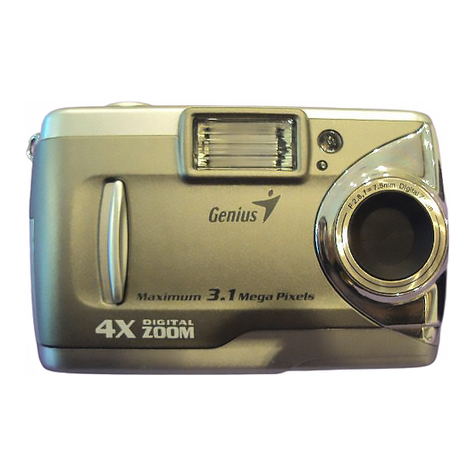NED XCM20160T2CXP User manual

User’s Manual
Line Scan Camera
Type: XCM20160T2CXP
NIPPON ELECTRO-SENSORY DEVICES
CORPORATION

2 NED
XCM20160T2CXP UME-0054-01
For Customers in U.S.A.
This equipment has been tested and found to comply with the limits for a Class A
digital device, in accordance with Part 15 of the FCC Rules. These limits are designed
to provide reasonable protection against harmful interference when the equipment is
operated in a commercial environment. This equipment generates, uses, and can
radiate radio frequency energy and, if not installed and used in accordance with the
instruction manual, may cause harmful interference to radio communications. Operation
of this equipment in a residential area is likely to cause harmful interference, in which
case the user will be required to correct the interference at his or her own expense.
For Customers in the EU
This equipment has been tested and found to comply with the essential requirements
of the EMC Directive 2004/108/EC, based on the following specifications applied:
EU Harmonised Standards
EN55022: 2010 Class A
EN61000-6-2: 2005
Warning
This is a class A product. In a domestic environment this product may cause radio
interference in which case the user may be required to take adequate measures.
Directive on Waste Electrical and Electronic Equipment (WEEE)
Please return all End of Life NED products to the distributor from whom the product was
purchased for adequate recycling and / or disposal. All costs of returning the Product to
NED are borne by the shipper.

NED 3
UME-0054-01 XCM20160T2CXP
Introduction
Thank you for purchasing NED’s Line Scan Camera. We look forward to your
continued custom in the future.
For safety use
For your protection, please read these safety instructions completely before
operating the product and keep this manual for future reference.
The following symbols appear next to important information regarding safe product
handling.
Warning
If the product is not handled properly, this may result
in serious injury or possible death.
Caution
If the product is not handled properly, this may result
in physical injury or cause property damage.
Safety precaution
Warning
Never disassemble or modify this product, unless otherwise specified to do so in
this manual.
When hands are wet, avoid handling this product and do not touch any of the
connection cable pins or other metallic components.
Do not operate this product in an environment that is exposed to rain or other
severe external elements, hazardous gases or chemicals.
If the product is not to be used for an extended period of time, as a safety
precaution, always unplug the connection cable from the camera unit.
If the product installation or inspection must be executed in an overhead location,
please take the necessary measures to prevent the camera unit and its
components from accidentally falling to the ground.
If smoke, an abnormal odor or strange noise is emitted from the camera unit, first
turn OFF power, then unplug the cable from the camera unit.
This product is not intended for use in a system configuration built for critical
applications.

4 NED
XCM20160T2CXP UME-0054-01
Instructions before use
Only operate this product within the recommended environmental temperature
range.
Use only the specified power source and voltage rating.
Do not drop this product. Avoid exposure to strong impact and vibrations.
Install the camera unit in a well-ventilated environment, in order to prevent the
camera from overheating.
If the camera must be installed in an environment containing dust or other particles,
take required measures to protect the camera unit from dust adhesion.
Do not unplug the cable while power is being supplied to the camera unit. To
prevent product damage, always shut down the power supply before unplugging
the power cable.
When the surface of the camera window becomes dirty due to dust or grime, black
smudges appear in the displayed image. Use an air blower to remove the dust
particles. Dip a cotton swab into ethanol alcohol and clean the camera window. Be
careful not to scratch the glass.
Use of non-infrared lighting such as a daylight fluorescent lamp is recommended. If
halogen lighting is employed, always install an infrared filter into your system
configuration.
Please note that exposure to long wavelength light outside of the sensors visible
optical range can affect the image.
Sensitivity may fluctuate depending on the spectral response level of the light
source. In cases like this, changing the light source to one with a different spectral
response level may reduce this problem.
For stabilized image capturing, turn ON the power supply and execute aging for ten
to twenty minutes before actually using the camera unit.
Do not share the power supply with motor units or other devices that generate noise
interference.
Do not disconnect the camera while rewriting the embedded memory.
When you change the exposure mode that is set at the NED factory, input control
signal (Trigger packet) from the capture board.

NED 5
UME-0054-01 XCM20160T2CXP
Product Warranty
Warranty Period
The product warranty period, as a general rule, is two years from purchase;
however for detailed conditions please contact the sales representative for your
region/country.
However, in some cases due to the usage environment, usage conditions and/or
frequency of use, this warranty period may not be applicable.
Warranty Scope
Product repair will be performed on a Return To Manufacturer basis. On-site
maintenance will incur additional charges.
If defects in material or workmanship occur during the warranty period, the faulty
part will be replaced or repaired by us free of charge. Return shipping charges must
be paid by the sender. However, the following cases fall outside of the scope of this
warranty:
Exclusions from Warranty Coverage
We will under no circumstances assume responsibility for the following cases:
damage caused by fire, earthquake, other acts of a third party, other accidents,
negligent or intentional misuse by the user, or other usage under extraordinary
circumstances.
Damages (e.g. loss of business profits, business interruption, etc.) resulting from
use or non-use.
Damages caused by use other than as described in this document.
Damages resulting from malfunction due to a connected device.
Damages resulting from repairs or modifications performed by the customer.
Fault Diagnosis
As a general rule, in the first instance fault diagnosis should take the form of a
telephone call or an email to enable us to assess the circumstances of the
malfunction.
However, depending on the customer’s requests, we, or our agent, may require an
additional fee for this service.

6 NED
XCM20160T2CXP UME-0054-01
Exclusion of Liability for Compensation for Missed Opportunities
Regardless of whether within the warranty period or not, our warranty does not
cover compensation for missed opportunities for our customers, or our customers’
customers, caused by a fault of our products, nor for damage to products other than
our own, or related business.
Note about Product Usage
This product has been designed and manufactured as a general-purpose product
for general industry. In applications expected to be life-critical or safety-critical, the
installer or user is requested to install double or triple failsafe systems.
Repair Service Outline
The cost of dispatching engineers etc. for repair service is not included in the price
of purchased and supplied goods. On request, arrangements can be made
separately.
Scope of Repair Service
The above assumes business dealings and usage to take place in the customer’s
region / country. In cases of business dealings and/or usage outside the
customer’s region/country, separate consultation is required.

NED 7
UME-0054-01 XCM20160T2CXP
Table of Contents
1 Product Outline .....................................................................10
1.1 Change Camera Operating Mode...............................................................10
1.2 Features........................................................................................................10
1.3 Applications ................................................................................................. 11
1.4 Image Sensor...............................................................................................12
1.5 Performance Specifications .......................................................................12
2 Camera Setting and Optical Interface .................................14
2.1 Setting the Camera......................................................................................14
2.2 Fixing Camera..............................................................................................14
2.3 Optical Interface...........................................................................................16
3 Hardware................................................................................17
3.1 Camera Connection.....................................................................................17
3.2 Input / Output Connectors and Indicator...................................................18
3.3 Power Supply...............................................................................................19
3.4 LED Indicator Status....................................................................................19
4 Camera Startup......................................................................20
4.1 Camera Startup Procedure .........................................................................20
5 Camera Control .....................................................................21
5.1 Flow of Camera Control ..............................................................................21
5.1.1 GenICam overview ................................................................................. 21
5.1.2 Camera Control registers....................................................................... 21
5.1.3 Memory Setup Values (Factory Settings)............................................. 22
5.2 Programmable exposure setting time and calculation of scan cycle.....23
5.3 Details on register system..........................................................................23
5.3.1 Setting Analog Gain ...............................................................................25
5.3.2 Setting Digital Gain................................................................................. 25
5.3.3 Setting Digital Offset.............................................................................. 26
5.3.4 Setting Exposure Mode.......................................................................... 26
5.3.5 Setting Exposure Time........................................................................... 27
5.3.6 Setting Output Signals (Setting Data Format)...................................... 27
5.3.7 Memory Initializing (Initializing Camera Settings) ............................... 28

8 NED
XCM20160T2CXP UME-0054-01
5.3.8 Memory Load (Reads out the camera settings from the flash memory )
))
)
................................................................................................................................ 28
5.3.9 Memory Save .......................................................................................... 28
5.3.10 Generating Test Pattern....................................................................... 28
5.3.11 Saving Pixel Correction Data............................................................... 29
5.3.12 Setting Pixel Correction....................................................................... 29
5.3.13 Setting Pixel Readout Direction .......................................................... 29
5.3.14 Change Camera Operating Mode Setting........................................... 30
5.4 Digital Processing flow in FPGA................................................................31
5.5 Startup..........................................................................................................31
5.6 Saving and Loading Camera Settings .......................................................32
5.7 Video Output Format...................................................................................33
5.8 XML file.........................................................................................................33
5.9 Exposure Mode and Timing Chart..............................................................34
5.9.1 Free Run Exposure Mode ......................................................................34
5.9.2 External Trigger Exposure Mode (Trigger Edge)................................. 35
5.9.3 External Trigger Exposure Mode (Trigger Level)................................. 36
5.10 Setting Offset.............................................................................................37
5.11 Setting Gain................................................................................................38
5.12 Pixel Correction.........................................................................................40
5.13 Test Pattern................................................................................................41
6 Confirming Camera Settings................................................42
6.1 Before Power-on..........................................................................................42
6.2 After Power-on.............................................................................................43
6.3 During Operation.........................................................................................44
7 Sensor Handling Instructions..............................................45
7.1 Electrostatic Discharge and the Sensor....................................................45
7.2 Protecting Against Dust, Oil and Scratches..............................................45
7.3 Cleaning the Sensor Window .....................................................................45
8 Troubleshooting....................................................................46
8.1 When there is no Image ..............................................................................46
8.2 When Noise is present in the Image ..........................................................47
8.3 When the Camera becomes hot .................................................................50
9 Others.....................................................................................51
9.1 Notice............................................................................................................51

NED 9
UME-0054-01 XCM20160T2CXP
9.2 Contact for support.....................................................................................51
9.3 Product Support ........................................................................................ 52

10 NED
XCM20160T2CXP UME-0054-01
1 Product Outline
1.1 Change Camera Operating Mode
●
●●
●
The camera operating mode is preset to XCM20160T2CXP at the factory.
●
●●
●
The operating mode can be changed from XCM20160T2CXP to
XCM20160CXP from the settings.
●
●●
●
When set to XCM20160CXP;
・Only one CoaXPress cable is required.
・Minimum Scan Period is 14.7µs.
●
●●
●
Refer to “Change Camera Operating Mode Setting”(5.3.14) for details.
Table 1-1-1
Camera Operating Mode Comparison Table
Items Mode
XCM20160T2CXP XCM20160CXP
Connectors CXP1・CXP2 CXP1
Maximum Scan Rate
(µs)/[kHz] 8.0/[125] 14.7/[68.03]
Number of Links 2(cables)1(cable)
1.2 Features
CoaXPress interface
CXP-2(2.5 Gbps). cable length up to about 100 m
High-integrity data
Real-time action
Up Link trigger semantics
Device Discovery
GENiCAM correspondence

NED 11
UME-0054-01 XCM20160T2CXP
1.3 Applications
Inspection of Transparent panels and PCBs
Visual inspection of high speed moving objects
Flat panel display inspection
Inspection of glass and sheet-like objects
Printed circuit board inspection
Outdoor surveillance
An example of Visual Inspection is shown below.
Figure 1-3-1 Visual Inspection of Metallic Cylinder
Object of inspection(example)
Metallic parts with cylindrical/conical shapes (surface and end faces)
・Automobile component・Architectural reinforcement parts
・Various pin parts
Typical detection item
・Chip・Dent・Scratch・Chipped end faces・External dimensions
Device specification
1.Camera: 2048 pixel line scan camera
2.Controller: Dedicated software for PC system
Line scan Camera
Object of inspection
■ Example using one camera.
(Inspection of surface)
■ Example using three cameras.
(Inspection of surface and end faces)

12 NED
XCM20160T2CXP UME-0054-01
1.4 Image Sensor
The camera uses a CMOS sensor with a maximum data rate of 320MHz to acquire
high responsivity and superior quality images.
The pixel size is 14µmx14µm.
XCM20160T2CXP outputs 2048 pixel data through a Dual CXP-2 CoaXPress
interface.
XCM20160CXP outputs 2048 pixel data through a Single CXP-2 CoaXPress
interface.
1.5 Performance Specifications
The Performance Specifications are shown below. Unless otherwise specified, the
data is shown when the camera is operating at the maximum scan rate.
Table 1-5-1 Performance Specifications
Items Specifications
XCM20160T2CXP XCM20160CXP
Number of Pixels 2048
Pixel Size HxV (µm) 14x14
Sensor Length (mm) 28.672
Spectral Responsivity (nm) 400~1000 ※Peak 625
Data Rate (MHz) 320 160
Maximum Scan Rate
(µs)/[kHz] 8.0/[125] 14.7/[68.03]
Saturation Exposure (lx・s)
(typically) 0.1[Minimum Gain, Pixel Correction Initial Value]
Responsivity (V/[lx・s]) (typically)
[Minimum Gain, Pixel Correction
Initial Value]
50※Visible Area (400~700nm)
※Analog 5V Conversion Sensitivity
Gain Adjustable Range
*Analog Amplifier +Digital Analog Amplifier:x1~x20(7STEP)
Digital:x1~x2(512STEP)
Offset Adjustable Range
*Digital 8bit:-15~15DN(31STEP)
10bit:-60~60DN(31STEP)

NED 13
UME-0054-01 XCM20160T2CXP
Video output CoaXPress Ver1.0
Connectors Data/Controller Canare: BCJ-FPC(75Ω)
Power Supply Hirose: HR10A(6Pin)
Lens Mount Nikon F Mount
Operating Temperature (˚C)
No Condensation 0 to 50
Power Supply Voltage (V) DC12~15[±5%]
Consumption Current (mA)
(typically) 600
Size W x H x D (mm) 60x100x85
Mass (g) (Camera only) Approx. 400
Additional Functions
1. Shading Correction
2. Gain/Offset Control, 8 or 10 bit Video Output Adjustable
3. Test Pattern Selection
4. Programmable Exposure Control
5. Scan Direction Switching
*1) DN : Digital Number (10bit : 0 -1023)
*2) Measurements were made at room temperature and daylight fluorescent light
Items Interface part specifications
XCM20160T2CXP XCM20160CXP
Bit Rate 2.5Gbps (CXP-2)
Discovery Rate
1.25Gbps (CXP-1)
(at the time of Device discovery)
Number of Links 2(cables)1(cable)
power line carrier system
(PoCXP)
unsupported
(Separate power supply required.)
Pixel Format black and white 8bit ・10bit (Mono8 ,Mono10)
Image Type Rectangular
External trigger
(Low Speed Link Trigger)
frame grabber(Host)→camera(Device)
jitter ±8ns

14 NED
XCM20160T2CXP UME-0054-01
The spectral Responsivity is shown below
相対感度(%)
20
40
60
80
100
Relative Responsivity(%)
400 500 600 700 800 900 1000
Wavelength (nm)
Figure 1-5-1 Spectral Responsivity
2 Camera Setting and Optical Interface
2.1 Setting the Camera
Use the M4 screw holes or the tripod screw hole to set the camera.
2.2 Fixing Camera
Use the M4 screw holes (4 places at the front, 8 places at the side) to fix the
camera.
Or use the 1/4"-20UNC screw hole for a tripod (1 place at the side).
If using the front panel M4 mounting holes (4 places at front, 8 places at side), the
screw length for fixing the camera should be less than 6mm.
No X-, Y-axis orientation and tilt adjustment mechanism is available. Please provide
an adjustment mechanism yourself as necessary.

NED 15
UME-0054-01 XCM20160T2CXP
The dimensions for camera are shown below.
MADE INJAPAN
NIPPON ELECTRO-SENSORY DEVICES CORP.
MADE IN JAPAN
NIPPON ELECTRO-SENSORY DEVICES CORP.
68
100
60
(85.0)
32
φ59
(1.7)
unit:mm
1-1/4"-20UNC DEEP 6
1st Pixel(2048)
4-M4 DEEP 6
(TOP,BOTTOM)
4-M4 DEEP 6
(BOTTOM)
(SIDE)
4-M4 DEEP 6
(FRONT)
40
5
74
18 64
5
40
50
Nikon Fmont
(FB=46.5)
13
55
POWER
DC12-15V
DIGITAL LINE SCAN CAMERA
CLISBee-S
BNC
(Canare BCJ-FPC)
Indicator
Power Supply Connector
(HIROSE HR10G-7R-6PB)
Figure 2-2-1
Dimensions (Nikon F Mount)

16 NED
XCM20160T2CXP UME-0054-01
2.3 Optical Interface
This camera is equipped with a Nikon F mount.
The amount and wavelengths of light required to capture useful images depend on
the intended use. Factors include the property, speed, the object’s spectral
characteristics, exposure time, the light source characteristics, the specifications of
the acquisition system and so on.
The exposure amount (exposure time x light amount) is the most important factor in
getting desirable images. Please determine the exposure amount after studying what
is most important to your system.
Keep these guidelines in mind when setting up your light source:
LED light sources are relatively inexpensive, provide a uniform field and longer
life span compared to other light sources. However, they also require a camera
with excellent sensitivity.
Halogen light sources generally provide very little blue relative to infrared light
(IR).
Fiber-optic light distribution systems generally transmit very little blue light
relative to IR.
Metal halide light sources are very bright but have a shorter life span compared
to other light sources.
Generally speaking, the brighter light sources, the shorter life span.
CMOS image sensors are sensitive to infrared (IR). We recommend using daylight
color fluorescent lamps that have low IR emissions. If you use a halogen light source,
to prevent infrared from distorting the images use an IR cutoff filter that does not
transmit IR wavelengths.

NED 17
UME-0054-01 XCM20160T2CXP
3 Hardware
3.1 Camera Connection
Depending on frame grabber board; up to two cameras can be connected to a
frame grabber board with operating mode - XCM20160T2CXP, and up to four
cameras can be connected for operating mode - XCM20160CXP.
<Note: Choosing a suitable coaxial cable>
Use a 75Ωcoaxial cable with a BNC connector according to the CoaXPress
standard.
The maximum cable length is not prescribed by the standard. The maximum
cable length to be able to transfer data depends on factors such as a attenuation,
diameter and manufacturer.
We recommend that you use a standard approved cable.
Refer to JIIA (http://jiia.org/cxp/) for more information about standard approved
cables.
As specifications for each manufacturer differs, please contact the cable
manufacturer directly for details.

18 NED
XCM20160T2CXP UME-0054-01
3.2 Input / Output Connectors and Indicator
The layout of input /output connectors and the indicator lamp are as follows.
Figure 3-2-1 Input/output Connectors and Indicator
The pin assignment of the power supply connector is shown below.
1
2
34
5
6
Figure 3-2-2 Power Supply Connector (HIROSE : HR10G -7R- 6PB)
Round shape push-pull lock type
Table 3-2-1 Pin Assignment of Power Supply Connector
No Name
1 12-15V
2 12-15V
3 12-15V
4 GND
5 GND
6 GND
POWER
DC12-15V
DIGITAL LINE SCAN CAMERA
CLISBee-S
Indicater
BNC
(Canare BCJ-FPC)
Power Supply Connector
(HIROSE HR10G-7R-6PB)

NED 19
UME-0054-01 XCM20160T2CXP
3.3 Power Supply
The camera requires a single power supply (DC+12 to +15V).
When selecting a power source, choose one with the capacity to allow for inrush
current. (15W or more recommended)
Insert the cable plug securely until it locks into position. This is to prevent the
connector from coming loose during power transmission.
Compatible Cable (Compatible plug): DGPSA-10
(HIROSE:
HR10A-7P-6S
)
Power supply voltage: DC+12-+15V (
+/-
5%)
Consumption Current (rated):
DC+12V: 600mA
The LED lamp illuminates when +12V to +15V power is being supplied to the
camera.
If the lamp fails to illuminate even after power is supplied, turn OFF power
immediately. Inspect wiring. Check the voltage and capacity of the supplied power
source.
3.4 LED Indicator Status
Camera Power Supply is off : LED off
Camera Booting Up (Power On) : Lights orange
Device Discovery : Lights orange for 0.5s
Scan rate > ~1.6S* : Blinks orange
Low Speed Link disconnected (Cable disconnected) : Lights red
Unable to process commands (System crash) : Blinks red
Transmitting image packets (Acquisition Start =1) : Lights green
Not transmitting image packets (Acquisition Stop =1) : Blinks green
* When the scan rate is close to 1.6s, the LED may flash orange and green alternately.
When Acquisition Start and Stop are performed repeatedly, the green LED may
appear to be flashing.
* Moreover, when repeating the operation rapidly, the green LED may appear dark.

20 NED
XCM20160T2CXP UME-0054-01
4
44
4
Camera Startup
4.1 Camera Startup Procedure
This camera does not immediately output stream data packets (image data) after
powering on. In order to output stream data packets, it is necessary to perform Device
Discovery (Camera and Frame Grabber connection).
Please check your frame grabber’s manual for how to perform device discovery.
The below example uses Matrox’s Radient eV-CXP as an example. The Radient
eV-CXP performs device discovery on opening a “DCF” file.
1. Open Intellicam from the Matrox Imaging Library
2. From the Intellicam “File/Open” Menu, open “DefaultLineScan”
3. If the contents of the DCF file are displayed, then discovery has been performed
successfully.
Table of contents
Other NED Digital Camera manuals
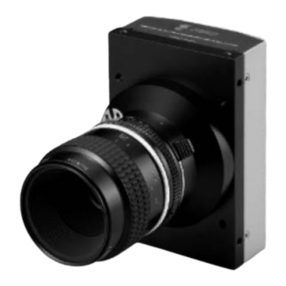
NED
NED XCM6040SAT2 User manual

NED
NED RMSL4K100CP User manual
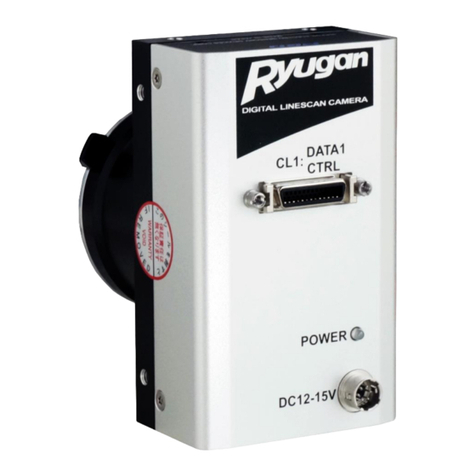
NED
NED CAMERA Link Ryugan RCDL2K20CL User manual
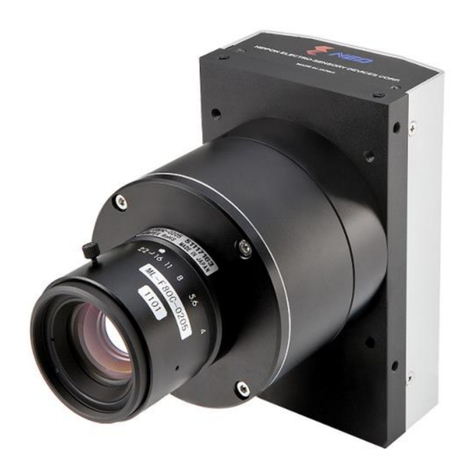
NED
NED XCM16K80SAT8 User manual
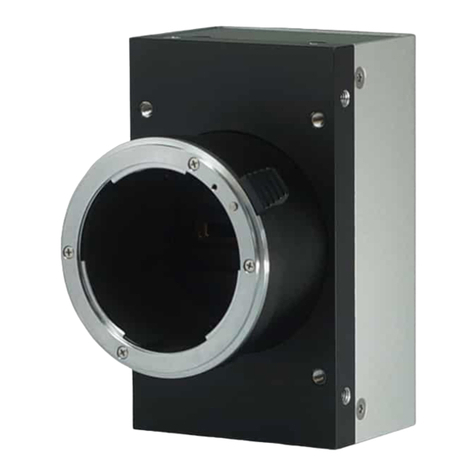
NED
NED RMSL8K39CL User manual

NED
NED CoaXpress XCM80160CXP User manual
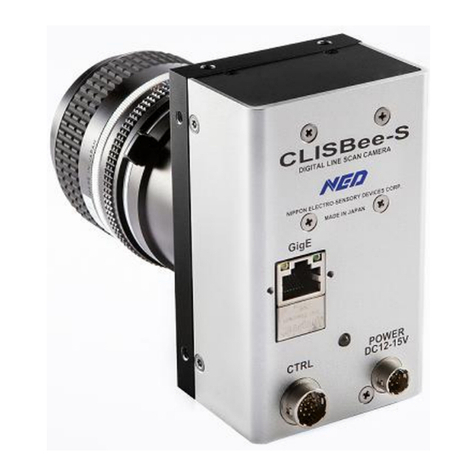
NED
NED XCM20125GIG User manual
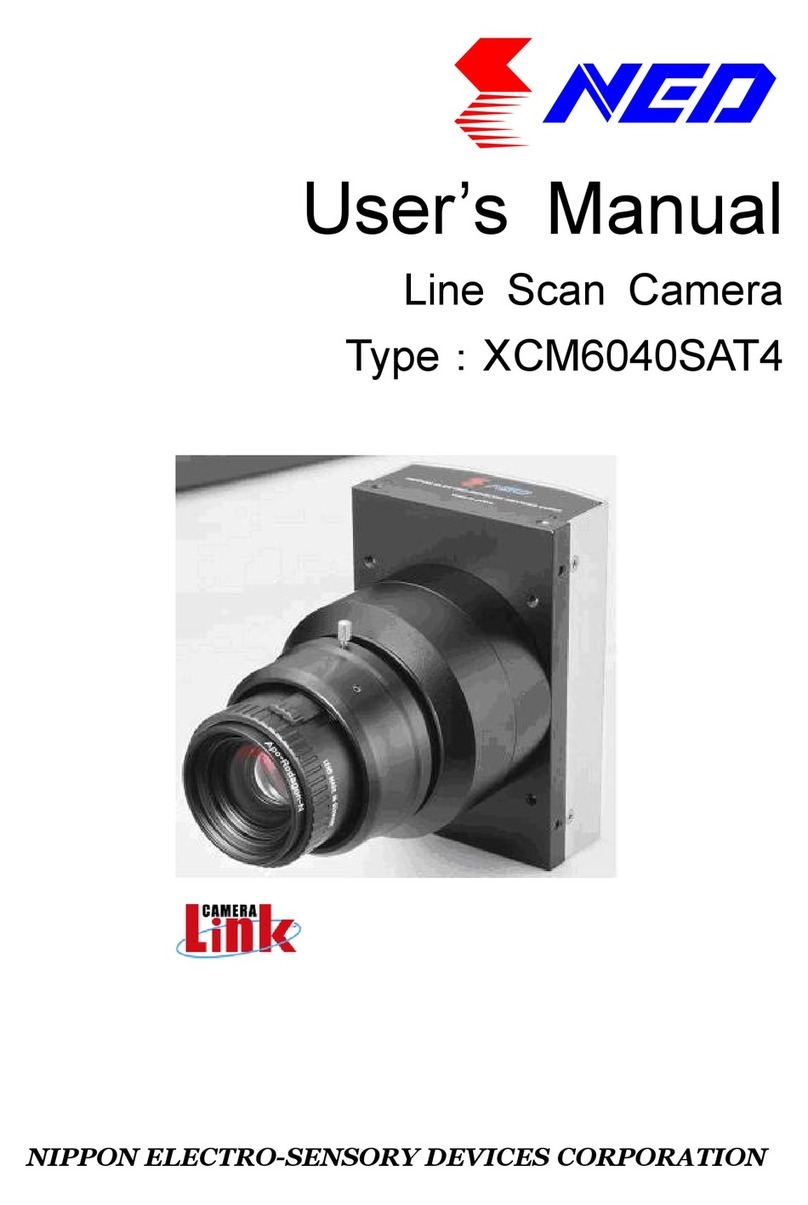
NED
NED XCM6040SAT4 User manual

NED
NED GiGE VISION RCDL4K8GE User manual
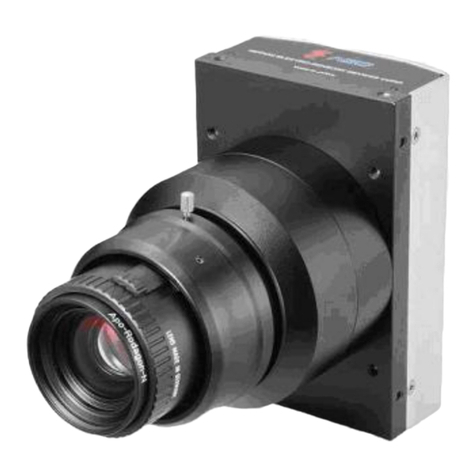
NED
NED Camera Link XCM8040SAT4 User manual
Popular Digital Camera manuals by other brands
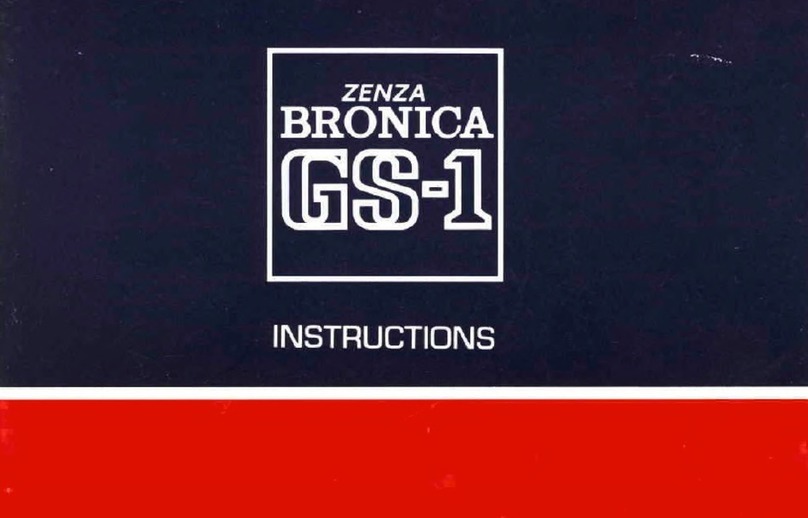
Zenza Bronica
Zenza Bronica CS-1 instructions
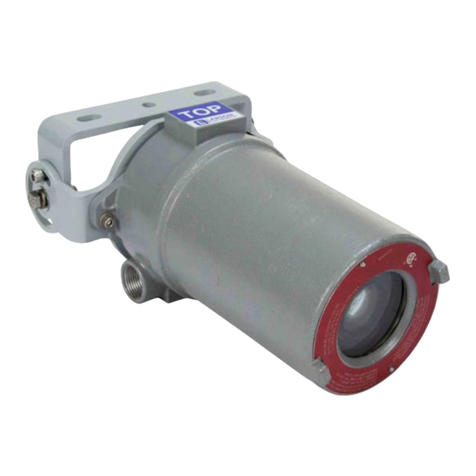
LARSON
LARSON EXPCMR-ALG-OZ-IC-1080P-1XLE3-5CQD-50C-12.4-M1 Quick installation and user guide
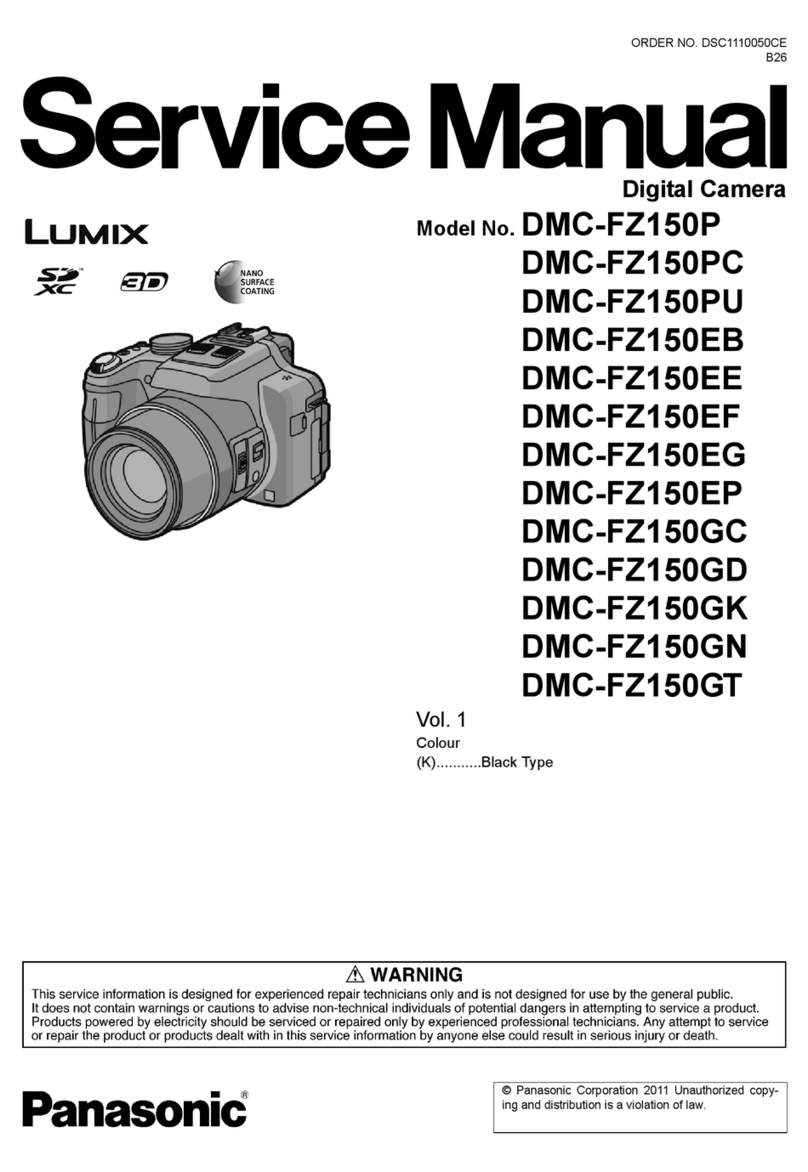
Panasonic
Panasonic Lumix DMC-FZ150P Service manual

Sony
Sony DSC S650 - Cyber-shot Digital Camera instruction manual

Ricoh
Ricoh DIACORD L Reference manual
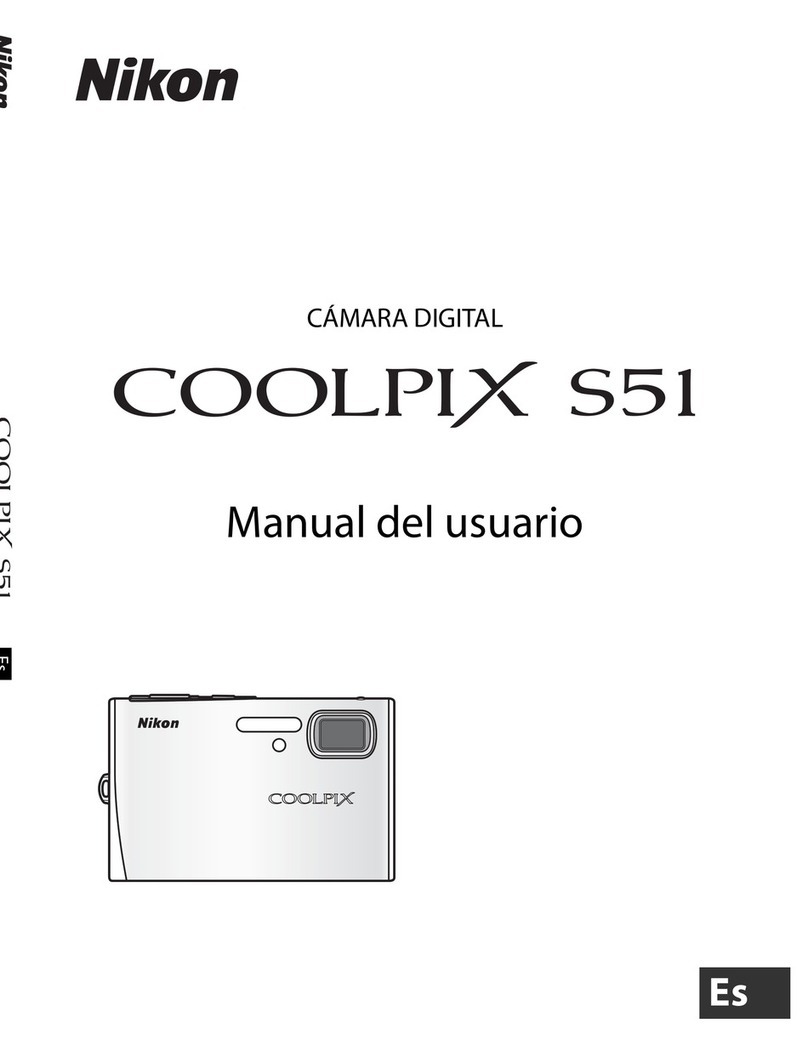
Nikon
Nikon CoolPix S51 Manual Del Usuario

